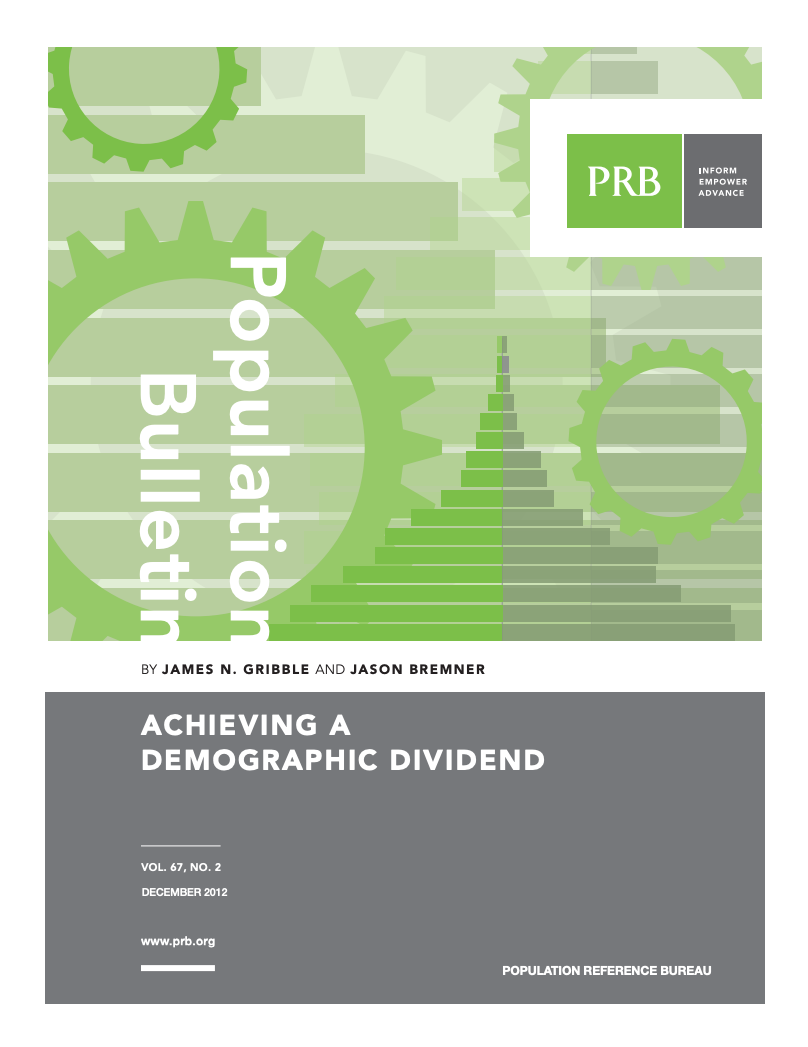
Achieving a Demographic Dividend
Product: Population Bulletin, vol. 67, no.2
Authors: James Gribble Jason Bremner
Date: January 21, 2013
One of the goals of development policies is to create an environment for rapid economic growth. The economic successes of the “Asian Tigers” during the 1960s and 1970s have led to a comprehensive way of thinking about how different sectors can work together to make this growth a reality. Referred to as the “demographic dividend,” this framework helps explain the experience of certain countries in Asia, and later successes in Latin America, and is creating a sense of optimism for improving the economic well-being of developing countries, especially in sub-Saharan Africa.
The demographic dividend refers to the accelerated economic growth that begins with changes in the age structure of a country’s population as it transitions from high to low birth and death rates. With fewer young people relative to the population of working-age adults, and with the successful implementation of key national policies over the long term, countries such as Thailand and Brazil have reaped the rewards from their demographic dividend. But many policymakers mistakenly think that a demographic dividend results automatically from a large population of young people relative to the population of working-age adults without the needed population, social, and economic policies. This is not the case.
This Population Bulletin explains the demographic dividend in terms of demographic changes, investments in human capital, and economic and governance policies. The experiences of Asia and Latin America in achieving their dividends are highlighted, as are the prospects for African nations. The last section outlines issues that countries need to plan for as they move beyond their demographic dividend.

 ">
">